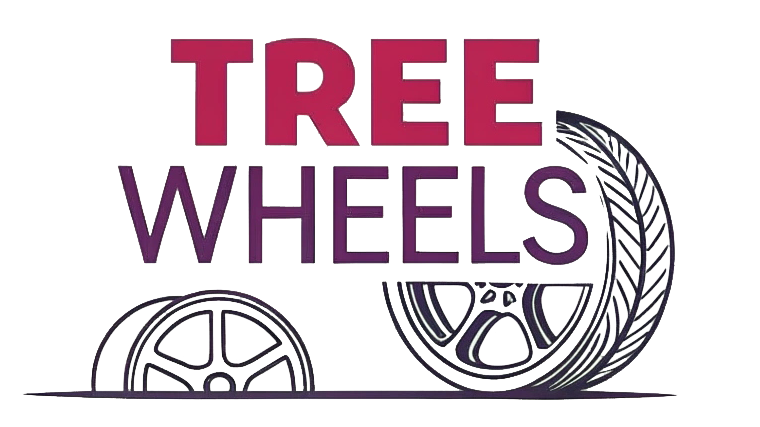Luxury vehicles consistently feature larger wheels than their everyday counterparts. This isn't a coincidence—these oversized rims make a powerful statement about status and performance, transforming an ordinary car into something extraordinary.
Luxury cars have bigger wheels primarily for aesthetic appeal, improved handling, and brand differentiation. The larger diameter wheels create a more commanding presence, enhance cornering stability through reduced sidewall flexing, and serve as a visual status symbol that distinguishes premium vehicles.
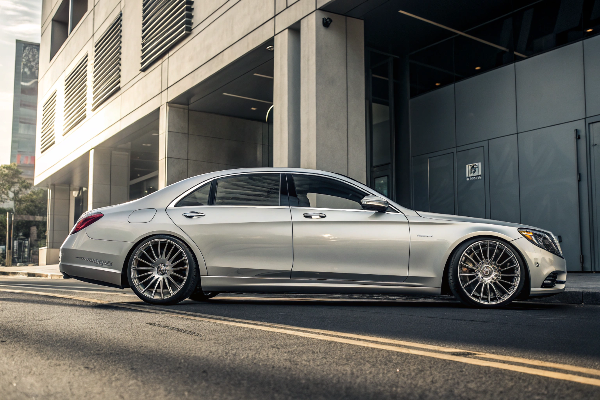
When you see a high-end Mercedes or BMW glide past, one of the first things that catches your eye is often those impressive wheels. Beyond just looks, the size of a vehicle's wheels speaks volumes about its positioning in the automotive hierarchy. Let's explore why luxury automakers consistently opt for bigger wheels and what advantages they actually provide.
What Is Considered A Premium Wheel?
The frustration of navigating through hundreds of wheel options can leave any car enthusiast overwhelmed. With seemingly endless sizes, materials, and designs, how do you identify what makes a wheel truly premium?
A premium wheel is characterized by forged construction (rather than cast), high-grade aluminum alloys or carbon fiber composites, precision engineering with tight tolerances, exclusive designs, and weights typically 20-30% lighter than standard wheels. They generally range from 18-24 inches for luxury vehicles.
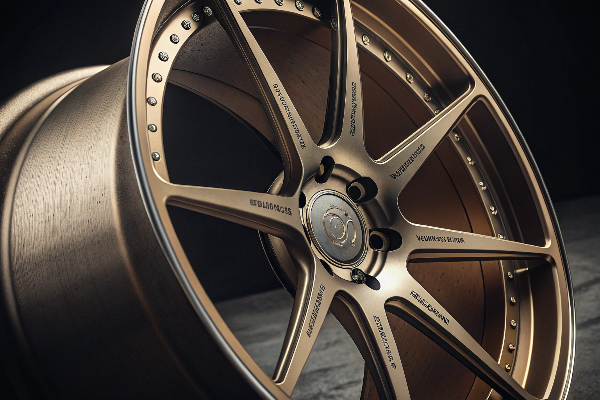
Premium wheels stand apart from standard wheels in several key aspects. First, the manufacturing process makes a significant difference—forged wheels are created under extreme pressure, resulting in a stronger, more dense metal structure compared to cast wheels that are simply poured into molds. This gives forged wheels superior strength-to-weight ratios.
Material quality also defines premium status. We use aircraft-grade aluminum alloys in our high-end forged wheels, often incorporating elements like magnesium for enhanced performance characteristics. The precision machining process is another differentiator—premium wheels have tighter tolerances (often within 0.01mm) compared to mass-produced options.
The design element cannot be overlooked either. Premium wheels feature complex, distinctive patterns that often require advanced multi-axis CNC machines to create. These designs aren't just for show—they often incorporate functional elements like optimized spoke arrangements that balance strength and weight distribution.
| Premium Wheel Attributes | Standard Wheel Characteristics |
|---|---|
| Forged construction | Cast construction |
| Aircraft-grade aluminum alloys | Basic aluminum alloys |
| Precision tolerances (<0.01mm) | Standard tolerances (0.05-0.1mm) |
| Complex, proprietary designs | Simple, mass-produced designs |
| 20-30% lighter than standard | Standard weight |
| Typically 18-24 inches for luxury | Typically 15-18 inches |
Why Do Modern Cars Have Such Big Wheels?
Have you noticed how wheel sizes have grown dramatically over the past decade? Family sedans that once rode on 15-inch wheels now commonly sport 17 or 18-inch rims, while luxury vehicles push boundaries with 20+ inch wheels as standard equipment.
Modern cars feature larger wheels primarily due to evolving aesthetic preferences, enhanced vehicle dynamics, improved braking performance, and market differentiation strategies. As vehicle sizes and weights have increased, larger wheels help maintain proportional appearance while providing the necessary structural support.
 modern sedan with large wheels](https://treewheels.com/wp-content/uploads/2025/07/image-3-modern-sedan-showcasing-the-trend-of-la.png)
The evolution toward larger wheels reflects both practical engineering considerations and changing consumer preferences. From our experience manufacturing premium wheels, we've observed several driving factors behind this industry-wide shift to larger diameters.
Aesthetic proportions play a crucial role. As vehicles have generally grown larger and taller, smaller wheels would appear disproportionate—imagine a modern SUV riding on 16-inch wheels, and you'll understand why designers opt for larger diameters to maintain visual balance. Our design team specifically calibrates each wheel diameter to complement the vehicle's dimensions and character.
Performance factors also drive this trend. Larger wheels allow for bigger brake components—critical as vehicles have become heavier and more powerful. The reduced sidewall height (aspect ratio) that comes with larger wheels improves cornering stability by reducing tire flex during aggressive maneuvers. This is why performance-oriented vehicles almost universally feature larger wheel diameters.
Market positioning cannot be overlooked. Manufacturers use wheel size as a visible indicator of trim level—base models might have 17-inch wheels while premium trims sport 19-inch or larger options. This creates an obvious visual hierarchy and encourages buyers to upgrade to higher-profit trim levels. At Tree Wheels, we've observed how customers prioritize wheel upgrades as one of their first modifications precisely because of this strong visual impact.
Technology advancements have also enabled this shift. Modern manufacturing techniques allow us to create larger wheels that remain acceptably light, while improved suspension design helps mitigate some of the ride quality challenges that traditionally came with larger wheel diameters.
Do Larger Wheels Improve Ride Quality?
When considering an upgrade to larger wheels, many customers ask us whether bigger really means better. They worry about sacrificing comfort for style or wonder if that harsher ride is worth the improved cornering ability they've heard about.
Larger wheels typically reduce ride quality due to decreased tire sidewall height, which provides less cushioning against impacts. While they may improve handling precision and responsiveness through reduced flex, the stiffer ride often results in more vibration and noise transmission to the cabin.
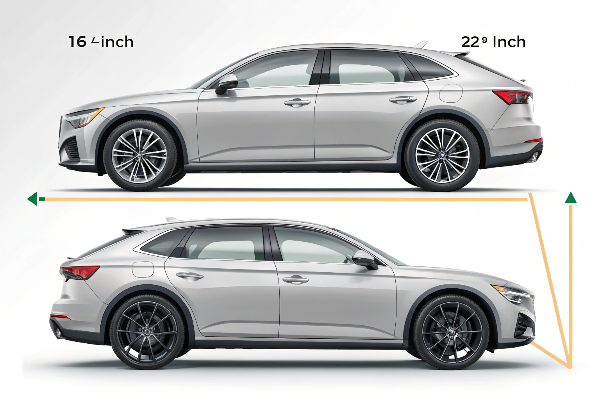
The relationship between wheel size and ride quality involves several important technical considerations. When a wheel's diameter increases, the tire's sidewall height must decrease to maintain the same overall wheel-and-tire diameter (otherwise, the larger wheel would affect speedometer readings and ground clearance). This reduced sidewall height fundamentally changes how the tire absorbs road imperfections.
Imagine the tire sidewall as your car's first line of defense against bumps and potholes. A taller sidewall flexes more, absorbing impacts before they reach the wheel and transfer into the suspension system. As manufacturers of premium wheels, we've seen countless customers experience this tradeoff firsthand. One of our clients who upgraded from factory 18-inch to our custom 22-inch forged wheels on his Range Rover immediately noticed both the improved cornering stability and the more pronounced road feedback.
The physics works like this: with a shorter sidewall (as found with larger wheels), there's less rubber to compress when hitting road imperfections. This results in more direct transfer of impact forces to the suspension components, which must then work harder to maintain ride comfort. While modern adaptive suspension systems can compensate somewhat, they can't fully eliminate this fundamental characteristic.
This tradeoff varies by vehicle design. Luxury manufacturers like Mercedes-Benz and BMW specifically engineer their suspension systems to accommodate larger wheels without severely compromising comfort, using technologies like air suspension and adaptive dampers. However, even with these advanced systems, the laws of physics remain—less sidewall means less natural impact absorption.
| Wheel Size | Handling Benefits | Ride Quality Impact |
|---|---|---|
| Smaller (16-18") | Moderate cornering stability | Excellent impact absorption |
| Medium (19-20") | Improved handling response | Good balance of comfort/performance |
| Large (21-24") | Maximum cornering precision | Reduced comfort, more road feedback |
What's The Point Of Larger Wheels On A Car?
You've probably wondered why car enthusiasts and manufacturers alike seem obsessed with larger wheels. Is it merely a status symbol, or do those extra inches of diameter actually serve a functional purpose?
The primary benefits of larger wheels include enhanced visual appeal through improved vehicle stance, better handling characteristics from reduced sidewall flex, increased brake clearance for performance applications, greater ground clearance for specific models, and the prestigious aesthetic associated with luxury vehicles.
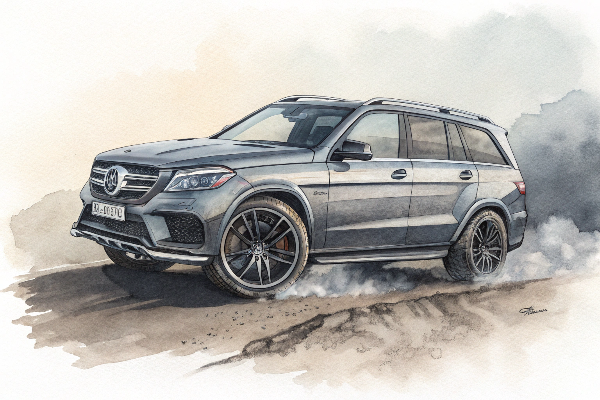
From our experience crafting custom forged wheels for premium vehicles, I can confirm that the advantages of larger wheels extend well beyond simple aesthetics. Take the example of the Tank 300 SUV popular in China—a vehicle that comes standard with 17-inch wheels and highway terrain (HT) tires. We've observed that approximately 80% of owners upgrade to 18 or even 19-inch wheels paired with all-terrain (AT) tires. This transformation isn't merely cosmetic; it fundamentally changes the vehicle's character.
The visual impact cannot be overstated. The increased wheel diameter dramatically enhances the vehicle's presence and proportions. Many luxury manufacturers deliberately design their vehicles with large wheel arches, anticipating that the appropriate wheel size is crucial to achieving the intended design language. Our design team specifically considers how wheel diameter affects the visual weight distribution of different vehicle types.
From a performance standpoint, larger wheels allow for wider tires with more rubber contacting the road. This increased contact patch improves traction during acceleration, braking, and cornering. Additionally, the reduced sidewall height minimizes tire deformation during aggressive driving maneuvers, resulting in more precise steering response and feedback.
For off-road applications like the Tank 300 example, larger wheels paired with appropriate tires can increase ground clearance—a critical factor for obstacle clearance. The improved approach and departure angles make a meaningful difference in capability, not just appearance.
There are practical considerations as well. Larger wheels provide additional clearance for upgraded brake systems—a common modification for performance enthusiasts. High-performance brake calipers and larger rotors simply won't fit with smaller wheel diameters, making larger wheels a necessity for serious performance builds.
The downsides should be acknowledged too: increased weight affects unsprung mass (though our forged wheels are designed to minimize this), potentially higher costs for both wheels and tires, and the aforementioned ride comfort compromises. Additionally, larger wheels generally increase fuel consumption due to greater rotational mass and potentially wider tires with increased rolling resistance.
Conclusion
Luxury cars feature larger wheels to create a commanding presence, enhance performance characteristics, and reinforce their premium positioning. While offering distinct advantages, the right size ultimately depends on your specific needs and preferences. At Tree Wheels, we craft premium forged wheels that balance aesthetics, performance, and comfort to elevate your driving experience.
